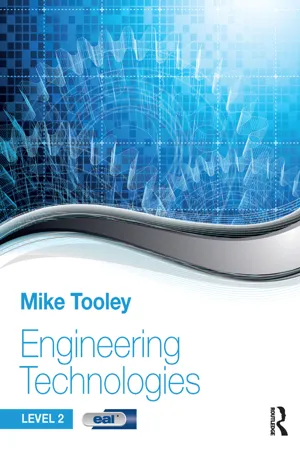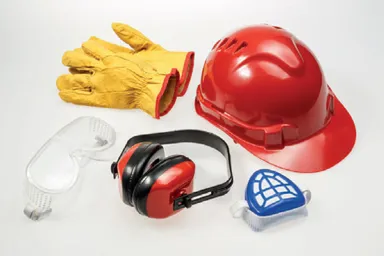
- 354 pages
- English
- ePUB (mobile friendly)
- Available on iOS & Android
About this book
Covers the three mandatory units of the EAL Level 2 Diploma in Engineering and Technology
- Each compulsory unit is covered in detail with activities, practice exercises and examples where relevant
- Review questions are provided at the end of each chapter and a sample multiple-choice examination paper is included at the end of the book
- Contains expert advice that has been written in collaboration with EAL to ensure that it covers what learners need to know
- Answers to selected questions in the book, together with other supporting resources, can be found at the book's companion website. Numerical answers are provided in the book itself.
Written specifically for the EAL Level 2 Diploma in Engineering and Technology, this book covers the three mandatory units on this course: Engineering Environment Awareness, Engineering Techniques, and Engineering Principles. Within each unit, the Learning Outcomes are covered in detail and the book includes activities and test your knowledge sections to check your understanding. At the end of each chapter is a checklist to make sure you have achieved each objective before you move onto the next section. At www.key2engtech.com, you can download answers to selected questions found within the book, as well as reference material and resources to support several other EAL units. This book is a must have for all learners studying for their EAL Level 2 Diploma award in Engineering and Technology and contains all of the essential knowledge you need to complete this course.
Frequently asked questions
- Essential is ideal for learners and professionals who enjoy exploring a wide range of subjects. Access the Essential Library with 800,000+ trusted titles and best-sellers across business, personal growth, and the humanities. Includes unlimited reading time and Standard Read Aloud voice.
- Complete: Perfect for advanced learners and researchers needing full, unrestricted access. Unlock 1.4M+ books across hundreds of subjects, including academic and specialized titles. The Complete Plan also includes advanced features like Premium Read Aloud and Research Assistant.
Please note we cannot support devices running on iOS 13 and Android 7 or earlier. Learn more about using the app.
Information
UNIT 1
Engineering environmental awareness

CHAPTER 1
Health and safety legislation and regulations

Chapter summary



The Management of Health and Safety at Work Regulations 1999
Table of contents
- Cover
- Half Title
- Title Page
- Copyright Page
- Table of Contents
- Preface
- Unit 1 Engineering environmental awareness
- Unit 2 Engineering techniques
- Unit 3 Engineering mathematics and science principles
- Appendix 1: Sample assessment
- Appendix 2: Using the Casio fx-83 calculator
- Appendix 3: Conversion table: Inches to mm
- Appendix 4: Answers to numerical ‘Test your knowledge’ questions
- Index